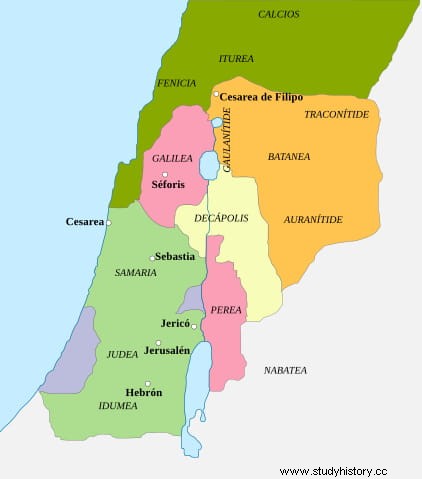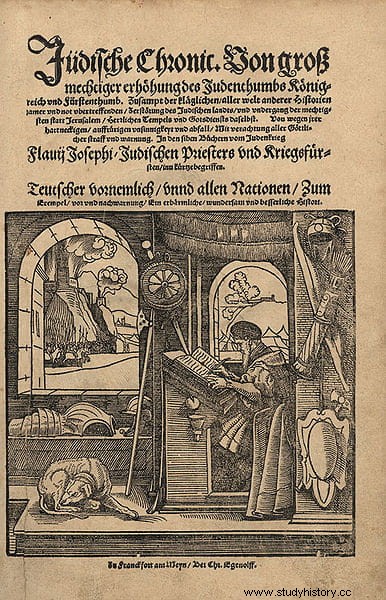The RAE defines the word hitman as "hired killer" and, in fact, today we tend to apply it in that sense in different contexts. However, the origin of the term is the Latin sicarius (plural sicarii ), a reference to a type of dagger or short sword, the sica, used by a group of Jewish fanatics who in the 1st century AD. They attacked the Roman legionnaires and their sympathizers.
In reality, the sica was not a Hebrew weapon but a Central European one, used since the final stage of the Bronze Age by the Thracian, Dacian and Illyrian peoples (the preserved specimens come from countries such as Serbia, Romania, Bosnia, Bulgaria or Albania), as shown in the reliefs of the Trajan Column, for example, in which Decebalus is seen killing himself with one. The sica was characterized by its curved blade, whose length varied depending on the type but was usually between thirty and forty centimeters, thus being a small version of the Dacian falx.
That morphology, designed to wound around the edges of the opponent's shield, made it the typical weapon of a type of gladiator, the thraex or Thracian, who also wore greaves, a helmet with a facial grille, and a shield called a parmula . This one, inspired by the parma reduced used by the velites of the legions (and cavalry), it was so small that extra protections were needed on the arm and shoulder that handled the sica. The thraex used to fight themurmillo , who had a very large shield, which is why he was given the sica to be able to overcome it.

Now, the dagger has gone down in history linked, above all, to the sicarii , to whom he named. To be exact, it was not the same weapon, since that of the assassins was smaller, so that it could be hidden in the folds of clothing, but the Romans saw a certain resemblance between its curved blade and that of the sica and read They called the same way. What exactly were the assassins? Basically, murderers tinged with strong nationalism against the domination of Rome and who carried out attacks against their representatives or even against compatriots who did not commit to the cause.
They used to take advantage of the crowds - especially on holidays - to approach their victims, draw the dagger and kill them, and then flee in the midst of the confusion. For this reason, in practice, the application of this denomination was extended to criminals in general, as reflected in the Lex Cornelia de Sicariis et Veneficiis (Cornelia Law on Stabbers and Poisoners), a regulation promulgated by Sila during his dictatorship, long before the episode that we are going to talk about next, the one that occurred in imperial Roman Judea, took place.
Between the years 66 and 73 AD. The First Jewish-Roman War broke out. The tension between the Jews and their rulers had begun from the first moment of the conversion of Judea into a province, and the appointment of the Idumean Herod the Great as king he did nothing but aggravate it, although, at the same time, the appointment served to contain it because he was a monarch as hated as he was feared. But on Herod's death, the revolutionary movements crystallized in the Zealot melting pot, a nationalist and theocratic group that, faced with the attitude of others such as the Sadducees or the Pharisees, also anti-Roman but more submissive, advocated insurrection.
It is curious to note that one of the twelve apostles of Jesus of Nazareth, Simon, was nicknamed the Zealot , at least in the Gospel of Luke and in the Acts of the apostles . It is true that it is probably a mistranslation, since that movement would still take three decades to emerge and some historians think that perhaps Simon's nickname was intended to be expressed literally (zealot means jealous). It is even more curious that another apostle, Judas Iscariot, was said to be a hitman. Again there are more than doubts about the chronology and, in any case, it would allude to another sect of a different nature, a kind of rebellious to the census ordered by Governor Publio Sulpicio Quirinio -the same one for which Joseph and Mary ended up in Bethlehem- and that led to an armed revolt.
Let's go back to the year 66. The causes of the uprising were various, as always. Added to the abundance of messianic movements, such as the Fourth Philosophy, was the precarious situation of a ruined and indebted peasantry, a string of taxes that prevented the few who retained half-sterile lands from leaving this situation, and the proliferation of social banditry. with bands of hundreds of members, many driven to it by the economic situation. A powder keg, as historian Neil Faulkner describes it.
When the Roman authorities tried to stay out of a violent dispute between Greeks and Jews, and it was later learned that the procurator had diverted part of the Temple treasure to his pockets, the population rose up in arms, encouraged by an incendiary speech by Eleazar Ben Ananias, son of the high priest. King Herod Agrippa II, great-grandson of theGreat , had to flee and the legions of Gaius Cestius Gallius legate, gathered in Acre, marched on Jerusalem to put down the revolt.
It was no easy task and the Legio XII Fulminata he fell into an ambush, which is why the subsequent repression was carried out with blood and fire. General Vespasian took command of four other legions and crushed the resistance, which became strong in Jerusalem. Vespasian had to go to Rome to proclaim himself emperor, leaving his son Titus in charge of taking the city and ending the war. He got it in 70 AD, but before that the Romans had to face a type of combatant they weren't used to.

They were the aforementioned sicarii , an organized group integrated into the most fanatical sector, the zealot, and whose members had not only stood out from the first moment among the main instigators of the rebellion but had also led by example in the bloodiest way:assassinating, kidnapping, destroying… What today would be considered terrorism, not so much resistance, because their actions were often indiscriminate and unscrupulous, in order to create a state of fear. For example, when they attacked the village of Ein Gedi (an oasis near the Dead Sea) they killed seven hundred people, not excluding women and children.
Of course, the credibility of the historiographical source must always be taken into account. In this case there shouldn't be much of a problem, since the most important one is The Jewish War written by Flavio Josefo, a Pharisee who during the conflict was appointed Commander-in-Chief of Galilee by the Sanhedrin, defending the fortress of Josapata for six weeks until he had to surrender. He saved his life because Vespasian, who had called him into his presence upon noticing his intellectual background, prophesied that he would be emperor.
Then he was released and, from then on, the one who until then was called Yosef ben Mattityah was romanized, changing his name to that of his captors (Tito Flavio Josefo) and joining the legions as chronicler and mediator. Later he would go to the metropolis, where he settled and worked for the rest of his life, dying around the year 100. But that's another story and the fact is that the seven volumes of The Jewish War constitute the reference work to know the facts, seeking an impossible objectivity.
Josephus does not have a positive view of zealots or assassins, comparing them to simple bandits and attributing to the latter a series of outrages in Jerusalem to instigate people to rise up against Rome. We have already seen that they were not overly scrupulous, to the point that they had assassinated Jonathan, the high priest, although an alternative version suggests that it could have been a plan concocted by Governor Antonio Felix to have a pretext with which to retaliate against the Jews. But there were more crimes and, indeed, the Romans took the opportunity to round up and convict rioters.
In that sense, often the sicarii They kidnapped notables as hostages to exchange them for their prisoners, as they did with the secretary of Eleazar, governor of the Temple precinct, for whose release they demanded the release of ten captives. Josephus explains that, despite what might seem a priori , they used to keep his word if the deal went through. He also says, in a confusing passage, that it was necessary to distinguish between hitmen and zealots, although he does not make explicit what the differences were.
Perhaps he was referring to the two-headed command they had, two leaders named Menahem ben Yehuda and Eleazar ben Ya'ir. The former is famous for his skillful campaign tactics, which enabled him to defeat and kill almost a thousand legionnaires from a Roman garrison near Masada, as well as taking the Antonia fortress (a bastion built in the heart of Jerusalem from which dominated the Temple esplanade and the city in general) and carry out periodic assaults on convoys. As for Eleazar ben Ya'ir, he is known because after the fall of Jerusalem he took refuge in the aforementioned fortress of Masada with a group of faithful of both sexes and withstood the Roman siege for seven months, eventually all committing suicide. /P>
Actually, there are other testimonies about the assassins. One of the Talmud says that at the beginning of the war they destroyed the silos of Jerusalem with the aim that the people, faced with the famine that would come, would have no choice but to fight. Likewise, they imposed the law of terror in the city together with the zealots and other exalted factions, executing anyone who expressed discrepancy. And it is that they formed a minority movement and lacked popular support, but they managed to hold the command until the troops of Tito cornered them in the Temple, which they then systematically assaulted.
Zealots and assassins had to escape as best they could, although most fell there. Those who succeeded, however, faced an inescapable reality:they had lost the war and that usually leads to internal discord. One of them ended in a bloody altercation in which the Zealots killed Menahem ben Yehuda, accused of messianism and aspiring to proclaim himself king; Others were the ones who barricaded themselves in Masada together with Eleazar ben Ya'ir. Those who survived so many ups and downs dispersed abroad.
